Let me tell you, there’s nothing quite like sinking your teeth into a perfectly cooked brisket. The melt-in-your-mouth tenderness, the juicy flavour that practically explodes in your mouth… it’s a culinary masterpiece, and one I’ve been chasing for years. It’s been a long and winding road, filled with both successes and, let’s be honest, some pretty disastrous attempts. But my journey led me to the Traeger, and that’s where things really started to click.
Now, I know what you’re thinking: "Brisket? On a Traeger?" You might be picturing those little pellets, and wondering how they could possibly cook something as large and demanding as a brisket. Trust me, it's a match made in barbecue heaven. The low and slow cooking style of the Traeger, combined with the wood-fired flavour, creates a brisket that’s beyond anything I could have imagined.
So, if you're ready to embark on your own brisket adventure, grab a cuppa, get comfy, and let’s dive into the ultimate guide to Traeger brisket perfection.
Part 1: The Brisket Basics

Understanding the Cut: A Journey Through the Beef
Brisket isn't just a hunk of meat, it's a complex beast with its own unique quirks. First off, it's a cut from the cow's chest, which means it’s packed with flavour and a decent amount of fat. That fat is key, you see. It’s what keeps the meat moist and tender during the long cook. There are two main types:
- Point: This is the "fattier" end of the brisket. Think of it as the more decadent part, perfect for that melt-in-your-mouth texture. It’s often favoured for its incredible flavour, as the fat renders down and creates a rich, buttery sauce. It's the "marbling" within the point cut that makes it so juicy and tender.
- Flat: This is the "leaner" option, offering a more consistent texture. It's generally considered a little less juicy than the point, but still incredibly delicious. It's a great choice if you prefer a leaner meat, but be prepared to pay attention to the fat rendering and use a bit more liquid for moisture during the cook.
Most people opt for the full packer brisket, which includes both point and flat. This gives you the best of both worlds, and ensures a truly satisfying experience. You'll get both the rich, decadent flavour and melt-in-your-mouth texture of the point, along with the leaner, more consistent texture of the flat. However, if you’re a newbie, I'd suggest starting with a smaller flat, as it’s less intimidating to handle.
Prepping for Perfection: Simple Steps for Big Results
Now that you've chosen your brisket, let's talk prep. Don’t get carried away with fancy techniques – keep it simple. A good trim is all you need.
- Remove Excess Fat: Start by removing any thick slabs of fat, leaving just a thin layer for moisture and flavour. We're aiming for a consistent layer of fat, about 1/4 inch thick, to help keep the brisket moist during the long cook. This fat will also render down and add incredible flavour.
- Season with Simplicity: I'm a firm believer in keeping things simple. Salt and pepper are your best friends. Season generously, focusing on the leaner flat side. You can also add a light dusting of paprika for a hint of colour and a subtle smoky flavour. Avoid heavy rubs or spices, as they can overpower the natural flavour of the brisket.
- The "texas crutch": This is a bit controversial, but I’ve found it to be a game-changer. Wrap the brisket in butcher paper after a few hours of cooking. This traps the moisture and steam, ensuring a juicy and tender outcome. It's a simple trick that makes a huge difference, especially for beginners. The butcher paper acts like a mini-steamer, creating a moist environment for the brisket to cook in, which helps prevent the meat from drying out.
Part 2: The Traeger Advantage

Okay, so now you’ve got your brisket prepped. This is where the Traeger magic really kicks in.
Setting the Stage: Getting Your Traeger Ready
Get your Traeger fired up and set the temperature to 225°F (107°C). This is the sweet spot for a low and slow brisket cook. This low temperature allows the meat to cook slowly and evenly, breaking down the connective tissue and making it incredibly tender. For extra smoky goodness, I like to use pecan or hickory pellets. They add a wonderful depth of flavour that elevates the entire experience. Pecan wood will give you a slightly sweet and nutty flavour, while hickory will add a more robust, smoky taste.
The Long Wait: The Cook
Here’s the thing: brisket is a marathon, not a sprint. Be prepared for a long cook, anywhere from 10-16 hours. Here’s how to tackle it:
- The Initial Smoke: Place the brisket fat side up on the grill grates and let it smoke for the first few hours. This allows the fat to render and creates that delicious bark. The bark is the crispy, flavorful outer layer of the brisket, and it's a crucial part of the overall experience. It's formed when the sugars and proteins on the surface caramelize, creating a smoky, crunchy texture.
- The Spritz: Every hour or so, spray the brisket with a simple apple cider vinegar and water mix. This keeps the meat moist and adds a subtle tang. The vinegar helps to create a flavorful crust, while the water keeps the meat from drying out.
- The Texas Crutch: After about 4-6 hours, it’s time for the "Texas Crutch." Wrap the brisket tightly in butcher paper and return it to the smoker. The trapped moisture will work its magic, making the brisket incredibly tender. You'll notice a difference in the texture and moisture of the meat after you've wrapped it. The trapped steam helps to break down the connective tissue and create a melt-in-your-mouth experience.
- The Stall: You’ll likely encounter a "stall" at some point during the cook. This is where the internal temperature plateaus for a while. Don’t panic! It’s just the meat absorbing moisture and breaking down connective tissue. Just keep cooking and it will eventually rise again. The stall is a natural part of the cooking process, and it's important to let it happen. The meat needs time to absorb the moisture and break down the connective tissue. You can help it along by using a digital meat thermometer to monitor the temperature closely.
- The Final Test: Use a meat thermometer to check the internal temperature. The brisket is done when it reaches 195°F (90°C) for the point and 203°F (95°C) for the flat. The temperature difference is because the point is fattier and will cook faster than the flat. Once it reaches these temperatures, it should be tender and ready to rest.
Part 3: Resting and Slicing

You’ve done the hard part. Now it’s time to let the brisket rest. This crucial step helps distribute the juices and ensures a juicy and tender outcome.
The Importance of Rest: Letting the Brisket Relax
Wrap the cooked brisket tightly in foil and let it rest for at least two hours. You can even wrap it in a towel for extra insulation. It's tempting to dive in right away, but resisting the urge is essential. During this resting period, the muscle fibers will relax and the juices will redistribute throughout the meat, creating a wonderfully tender and juicy final product. While it's resting, prepare your cutting board and your carving tools.
The Art of Slicing: A Skill That Takes Practice
Now comes the fun part: carving. This is where you get to showcase all that hard work. Here are a few tips:
- Slice Against the Grain: This is essential for achieving the desired tender texture. Slice thin slices across the direction of the muscle fibres. Imagine you're slicing a loaf of bread, cutting across the grain. This allows the meat to be more tender and easier to chew, giving you a more enjoyable eating experience.
- Separate Point and Flat: If you’re working with a full packer brisket, separate the point from the flat. The point will be more tender and buttery, while the flat will be leaner and more consistent. You can slice them separately, or you can even use the point for sandwiches and the flat for slicing.
- Arrange for Presentation: Arrange the slices on a platter, or on individual plates, and get ready to dig in!
Part 4: Serving and Sides
The brisket is the star of the show, but it needs a supporting cast to truly shine. Here are a few ideas to complete your barbecue feast.
The Perfect Accompaniments: Balancing Flavors and Textures
The beauty of barbecue is its versatility. You can go classic or get creative with your sides. Here are a few suggestions:
- Classic: Coleslaw, potato salad, baked beans, mac and cheese. These classic sides provide a balance of flavors and textures to complement the richness of the brisket. They also add a touch of nostalgia and comfort to your barbecue feast.
- Creative: grilled corn on the cob, watermelon salad, roasted vegetables. These creative sides bring a fresh, seasonal element to the table. They can help to lighten up the meal and provide a refreshing counterpoint to the richness of the brisket.
The Sauces and Rubs: Adding Layers of Flavor
While a simple salt and pepper seasoning is all you need for a delicious brisket, you can always add a touch of extra flavour with your favourite barbecue sauce or rub.
- Sauces: Choose from a variety of smoky, tangy, or sweet sauces to add depth and richness. You can even use different sauces on different parts of the brisket. A smoky sauce might pair well with the point, while a tangy sauce might be more suitable for the flat.
- Rubs: Try a dry rub with paprika, garlic powder, onion powder, and brown sugar for a more intense flavour. A good rub will help to create a flavorful bark on the brisket. You can apply the rub before cooking, or you can even use a wet rub, which is a combination of spices and liquid ingredients.
Part 5: Beyond the Basics: Experimentation
Now that you’ve mastered the basics, let’s explore some creative variations to spice things up!
Spice Up Your Brisket: Adding Unique Flavors
Experiment with different rubs and sauces, or try adding a few ingredients to your brisket for a unique flavour twist.
- Smoked Garlic: Add a few cloves of smoked garlic to the smoker with the brisket for a deep, earthy flavour. Smoked garlic adds a complex, savory note that complements the brisket beautifully. You can simply place the garlic cloves directly on the smoker grates, or you can wrap them in foil for a more concentrated flavor.
- Coffee Rub: Create a smoky and robust rub by combining coffee grounds with spices like paprika, cumin, and chili powder. The coffee grounds add a rich, earthy flavor that pairs well with the smoky notes of the brisket. The spices provide an extra layer of flavor and heat.
- Applewood Smoke: Use applewood pellets for a sweeter, fruitier flavour that complements the brisket beautifully. Applewood pellets impart a delicate, fruity flavor that cuts through the richness of the brisket. It's a great option for those who prefer a slightly sweeter smoke.
The Art of the Brisket Sandwich: Taking It to the Next Level
What’s a brisket cook without a mouthwatering brisket sandwich?
- The Bun: Choose a sturdy bun, like a brioche or potato roll, that can handle the juicy brisket without falling apart. A good bun should have a soft texture and a slight sweetness to complement the brisket. You can even toast the bun for extra flavor and texture.
- The Toppings: Get creative with your toppings! Classic options include pickles, onions, and barbecue sauce. You can also add a slice of cheddar cheese, a dollop of coleslaw, or even a fried onion ring. The possibilities are endless.
Part 6: Common Mistakes
Everyone makes mistakes, even seasoned barbecue enthusiasts. Learn from these common pitfalls to avoid them in your next brisket cook.
The Pitfalls to Avoid: Lessons Learned
- Not Trimming Properly: A thick layer of fat can hinder smoke penetration and create a tough, chewy brisket. Proper trimming is essential for ensuring that the smoke reaches all parts of the brisket and that the fat renders down evenly. You want to create a consistent layer of fat, about 1/4 inch thick.
- Over-seasoning: A simple salt and pepper seasoning is often all you need. Too much seasoning can overpower the natural flavour of the brisket. It's better to err on the side of caution and use a light hand when seasoning. You can always add more flavour with a sauce later on.
- Not Wrapping: The "Texas Crutch" is essential for achieving a tender and juicy brisket. Don't skip this step! Wrapping the brisket helps to trap the moisture and steam, creating a more tender and juicy outcome. It's especially important for beginners to use this technique, as it helps to ensure success.
- Taking it Off Too Soon: Don't rush the cook. Ensure the brisket reaches the correct internal temperature before removing it from the smoker. If you take the brisket off too soon, it won't be cooked through and it will be tough and chewy. The internal temperature is the best indicator of doneness.
Part 7: FAQs
Here are some common questions about Traeger brisket, answered to help you navigate this delicious journey.
1. How Long Does It Take to Cook a Brisket on a Traeger?
The cook time for a brisket on a Traeger will vary depending on the size of the brisket and the desired level of tenderness. Expect to cook it for 10-16 hours. A general rule of thumb is to allow about 1.5 hours per pound of brisket. A 10-pound brisket will take about 15 hours to cook.
2. Should I Use a Smoke Box?
While a smoke box can add extra smokiness, it's not necessary for a great Traeger brisket. The wood pellets provide plenty of smoke for flavour. A smoke box can be helpful for adding a more concentrated smoke flavour, but it's not essential. The wood pellets will provide ample smoke for a delicious brisket. If you do decide to use a smoke box, be sure to use a good quality wood chip like hickory, pecan, or applewood.
3. Can I Cook a Brisket on a Traeger Without a "Texas Crutch"?
You can, but the "Texas Crutch" is a game-changer for tenderness and juiciness. It’s highly recommended. While you can cook a brisket without using the "Texas Crutch", it will likely be less tender and juicy. The trapped moisture and steam created by wrapping the brisket help to break down the connective tissue and make the meat incredibly tender. It's a simple technique that makes a big difference.
4. What’s the Best Way to Tell if My Brisket is Done?
The best way to tell if your brisket is done is to check the internal temperature with a meat thermometer. It should reach 195°F (90°C) for the point and 203°F (95°C) for the flat. You can also check for tenderness by gently poking it with a fork. The brisket should feel like butter when it’s ready. The internal temperature is the most reliable way to determine doneness, but checking for tenderness is a helpful secondary indicator.
5. Can I Reheat Brisket?
Yes, you can reheat brisket. The best way to reheat it is in a slow cooker or in a low oven. Reheating brisket in a slow cooker will help to keep it moist and tender. If you're using an oven, set it to a low temperature (around 200°F or 93°C) and reheat the brisket until it's warmed through.
Part 8: Traeger Brisket: A culinary adventure
Cooking a brisket on a Traeger is more than just a recipe. It’s a journey of flavour, patience, and a love for the art of barbecue. It’s a chance to create something truly special, something that will be remembered long after the last bite is gone.
So, go on, take the leap and embark on your own brisket adventure. Trust me, you won’t regret it. And if you do happen to stumble along the way, remember, it’s all part of the journey. Each brisket cook is a learning experience, a chance to perfect your skills and create something truly extraordinary. Be patient, have fun, and embrace the journey. The reward for your efforts will be a brisket that is both delicious and unforgettable.
Everyone is watching
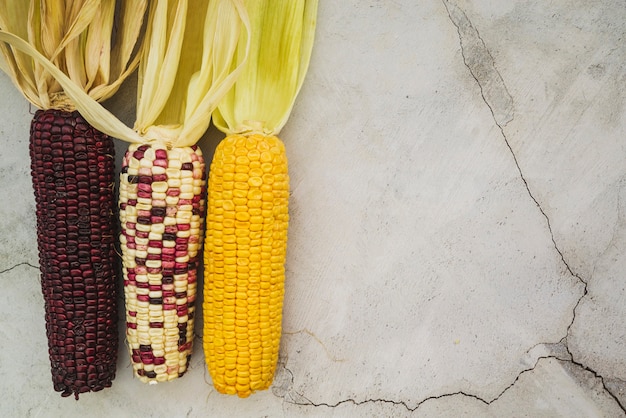
Corn on the Cob: The Ultimate Guide to Perfectly Cooked Ears
Healthy MealsAh, corn on the cob. Just the name evokes images of sunny days, barbecues, and that sweet, juicy flavour that ...
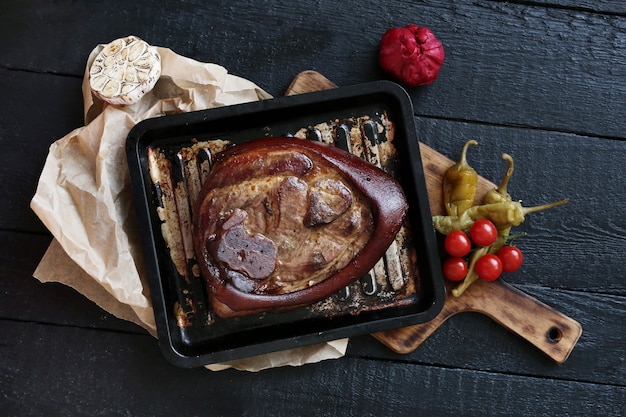
Perfect Pork Roast Oven Cooking Time: A Guide to Delicious Results
Healthy MealsThere's something truly satisfying about a perfectly roasted pork. The aroma alone is enough to make your mout...
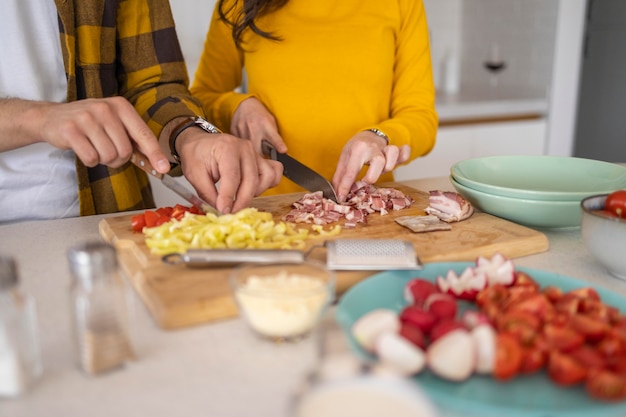
Ham Cooking Time: How Long to Bake, Smoke, or Boil a Delicious Ham
Healthy MealsAh, ham. It's a classic, isn't it? A real crowd-pleaser, especially around holidays. And when done right, it'...
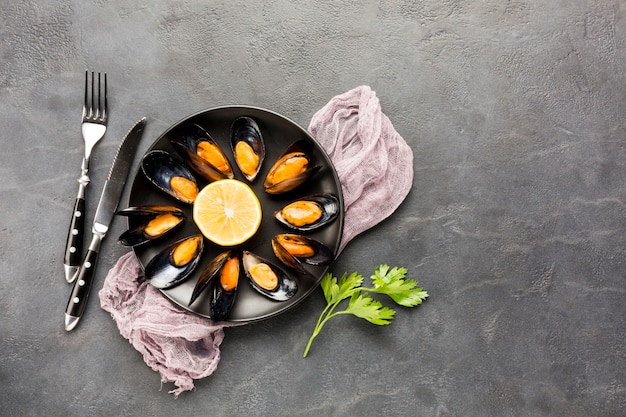
Scallops: The Ultimate Guide to Perfect Cooking
Healthy MealsAh, scallops. Those delicate, sweet, and utterly delicious morsels of the sea. They hold a special place in my...
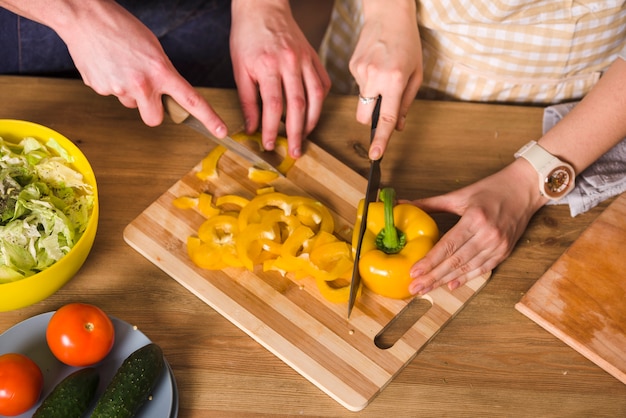
Spaghetti Squash: The Ultimate Guide to Cooking and Serving
Healthy MealsRemember that time you saw spaghetti squash at the supermarket, looking all bumpy and strange, and thought, "W...
